100,000 Hours of Preservation Architecture
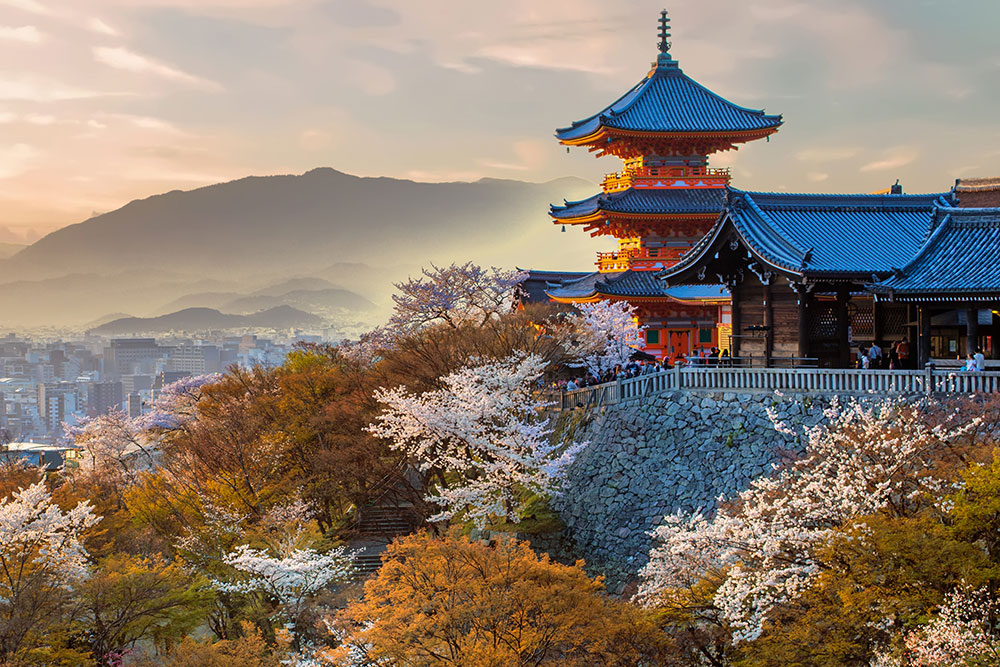
At the 1,400-year old Kongō Gumi temple building company in Japan, craftsmen learned a single skill, such as sawing or chiseling, and practiced it for a lifetime. Their first Buddhist temple construction, Seiganto-ji, was built in 593 (above) and illustrates the quality and skill they sought to replicate and retain over centuries. Kongō Gumi workers had the luxury of producing the same product, a wood Buddhist temple constructed with hand tools, again and again. After about 60,000 hours of experience a worker may be known as a takumi (which roughly translates as artisan/master carpenter).
I have worked 40 hours/week x 50 weeks x 50 years = 100,000 Hours of architecture. Actually, that’s an undercount because I rarely work only 40 hours per week. And what have I learned? Many, many, many things.
In contrast to a takumi, the 100,000-hour preservation architect masters a huge variety of technical, administrative and even arcane skills. For example:
What color should we paint the recreated movie palace marquee? Answer: Verdigris, a French word for the patina of old copper exposed to the weather that combines verde (green) with gris (gray).
How to get the certificate of occupancy when the building inspector says the 150-year old wainscot doesn’t have a fire rating? Answer: Coat it with intumescent paint that bubbles up in intense heat (thus protecting the material underneath).
How to insert offices into an Art Deco theater while keeping its sense of space? Answer: Break up the infill into pods.
And that is just the tip of the iceberg of the experience I have gleaned over the years. Curious?
Take a trip with me through 100,000 hours of preservation architecture.
0 Hours
 I graduate with my second architecture degree from Rensselaer, the oldest engineering school in the U.S., having already designed my first custom house in New Jersey. The current vogue is Brutalist style architecture, which I don’t really get.
I graduate with my second architecture degree from Rensselaer, the oldest engineering school in the U.S., having already designed my first custom house in New Jersey. The current vogue is Brutalist style architecture, which I don’t really get.
1,000 Hours
I am a Vista Volunteer at the Metro Link Community Design Center in New Orleans working on projects for poor people in the South. Projects include renovating “shotgun” houses in the Irish Channel neighborhood, new farm co-op buildings in Marked Tree, Arkansas, hurricane disaster relief in Corpus Christi, TX, and super graphics in a New Orleans prison. I begin my love affair with historic buildings.
3,000 Hours
As part of the D. C. Transit Development Team I plan urban development around Metro stations (still under construction), develop the Plan for the West End of Washington DC, and write DC’s first mixed use commercial-residential zoning category. The rezoning leads to a building boom that fills the vacant land with condominiums, hotels, offices and restaurants.
4,000 Hours
I consider my $200 a month rent for an apartment in the Dupont Circle neighborhood of Washington DC ridiculously high, buy a nearby townhouse, and become a serial renovator.
9,000 Hours
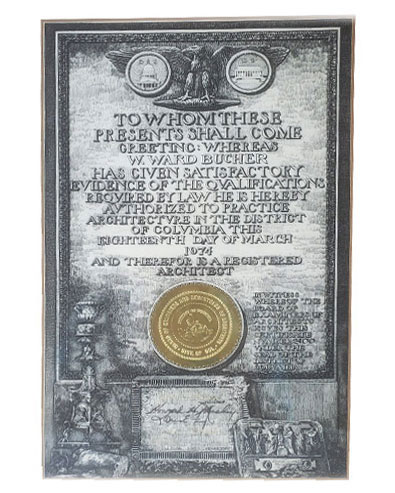 I pass a week-long examination and become a licensed architect in the District of Columbia, followed by licensure in Maryland and Virginia. Now I am officially a Junior member of the profession, join the American Institute of Architects, and start my private practice.
I pass a week-long examination and become a licensed architect in the District of Columbia, followed by licensure in Maryland and Virginia. Now I am officially a Junior member of the profession, join the American Institute of Architects, and start my private practice.
10,000 Hours
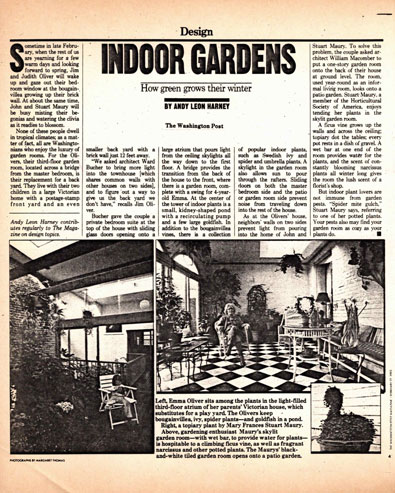 I help the Oliver family bring light into their Queen Anne Style townhouse that has no back yard by creating a central atrium with glass walls. The children love the light filled top floor playroom with treehouse and lush plants. The Washington Post finds it wonderful as well.
I help the Oliver family bring light into their Queen Anne Style townhouse that has no back yard by creating a central atrium with glass walls. The children love the light filled top floor playroom with treehouse and lush plants. The Washington Post finds it wonderful as well.
11,000 Hours
I dive deep into historic preservation at the summer building conservation program at the West Dean College of Arts and Conservation, Chichester, England.
12,000 Hours
The renovation of the penthouse of my townhouse in conjunction with architect Bob Schwartz and his wife Carol is featured in the Washington Post.
13,000 Hours
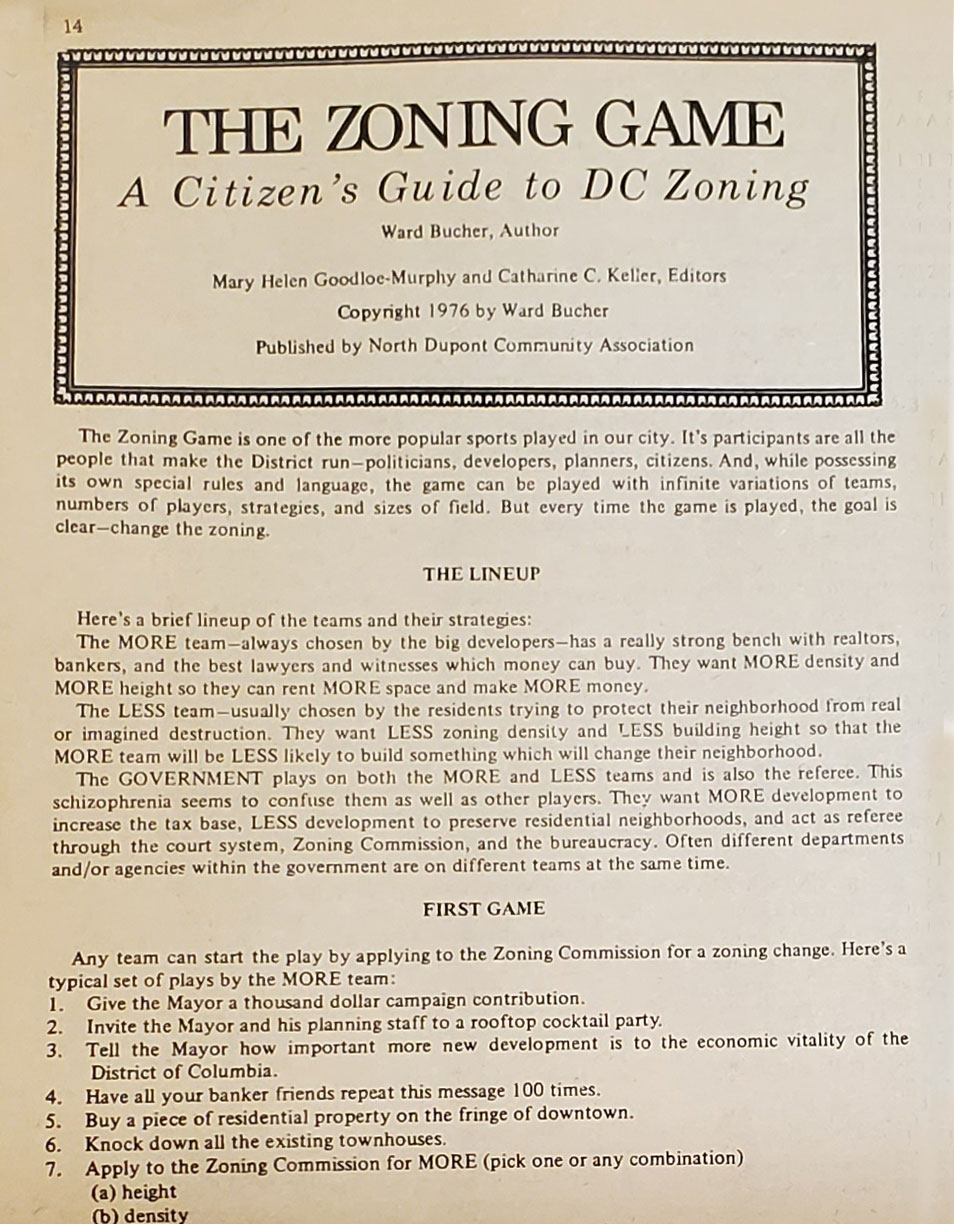 Beautiful Victorian buildings in Dupont Circle are being torn down to build ugly tall buildings. I provide technical services for local residents to successfully lobby the Zoning Commission to lower the permitted zoning to protect the historic resources. The Washington Post covers the citizen outcry and subsequent win.
Beautiful Victorian buildings in Dupont Circle are being torn down to build ugly tall buildings. I provide technical services for local residents to successfully lobby the Zoning Commission to lower the permitted zoning to protect the historic resources. The Washington Post covers the citizen outcry and subsequent win.
18,000 Hours
 My pro bono design work helps create the Crispus Attucks Park for the Arts at the site of the abandoned original C&P Telephone switching station and warehouse in the middle of a block in the Bloomingdale neighborhood of Washington, DC in 1978.
My pro bono design work helps create the Crispus Attucks Park for the Arts at the site of the abandoned original C&P Telephone switching station and warehouse in the middle of a block in the Bloomingdale neighborhood of Washington, DC in 1978.
24,000 Hours
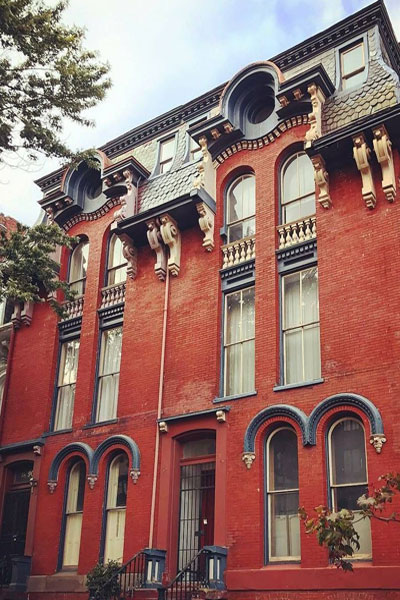 The elaborate Italianate façade of the National Historic Landmark, Blanche K. Bruce house, the first black United States Senator, is restored. Local body shop workers are recruited to sculpt the curved patches. The exterior woodwork is covered with sand paint matching the original to resemble stone.
The elaborate Italianate façade of the National Historic Landmark, Blanche K. Bruce house, the first black United States Senator, is restored. Local body shop workers are recruited to sculpt the curved patches. The exterior woodwork is covered with sand paint matching the original to resemble stone.
25,000 Hours
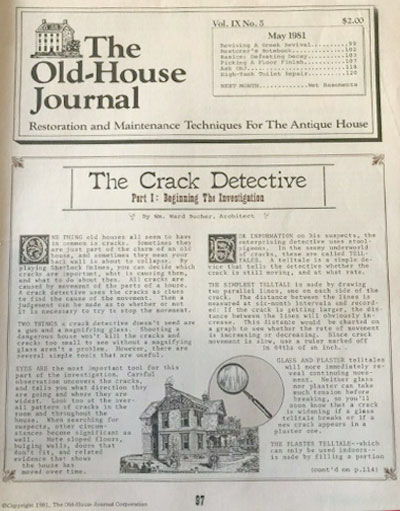 My series of articles entitled “The Crack Detective” is published in the original Old-House Journal explaining how to use building cracks to diagnose structural problems.
My series of articles entitled “The Crack Detective” is published in the original Old-House Journal explaining how to use building cracks to diagnose structural problems.
25,500 Hours
Two rooftop deck projects are featured in the Washington Post.
26,000 Hours
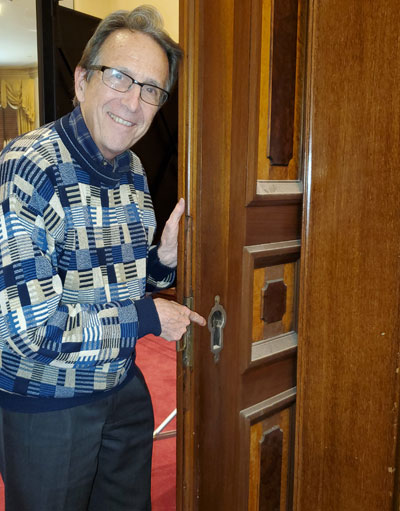 The firm receives a design award for the complete historic restoration project of the Mary McLeod Bethune Museum and Archive for Black Women’s History. The 1875 Italianate style building was the home of Mrs. Bethune and the National Council of Negro Women for many years beginning in 1941. It is now a National Historic Site managed by the National Park Service. The original wood graining was restored by master craftsman Malcolm Robson.
The firm receives a design award for the complete historic restoration project of the Mary McLeod Bethune Museum and Archive for Black Women’s History. The 1875 Italianate style building was the home of Mrs. Bethune and the National Council of Negro Women for many years beginning in 1941. It is now a National Historic Site managed by the National Park Service. The original wood graining was restored by master craftsman Malcolm Robson.
32,000 Hours
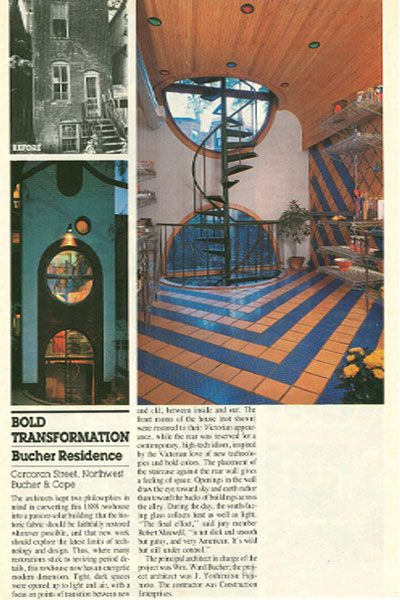 My Dupont Circle area townhouse combining restoration and renovation elements wins design awards.
My Dupont Circle area townhouse combining restoration and renovation elements wins design awards.
54,000 Hours
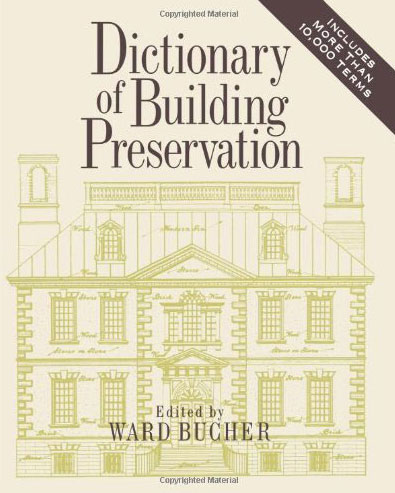 The Dictionary of Building Preservation is published by John Wiley & Sons. The writing of the compendium of more than 10,000 historic building and preservation terms was sponsored by the National Trust for Historic Preservation.
The Dictionary of Building Preservation is published by John Wiley & Sons. The writing of the compendium of more than 10,000 historic building and preservation terms was sponsored by the National Trust for Historic Preservation.
60,000 Hours
I prepare an existing building report for the 17th Century Wye Mill that includes testing by Bryan Blundell for internal decay of the original timber frame.
65,000 Hours
 Over a twelve-year period I work with Save Our Seminary to preserve the dozens of quirky buildings of the former National Park Seminary School at Forest Glen. The team receives a design award for the restoration of the iconic Pagoda, a former sorority clubhouse.
Over a twelve-year period I work with Save Our Seminary to preserve the dozens of quirky buildings of the former National Park Seminary School at Forest Glen. The team receives a design award for the restoration of the iconic Pagoda, a former sorority clubhouse.
72,000 Hours
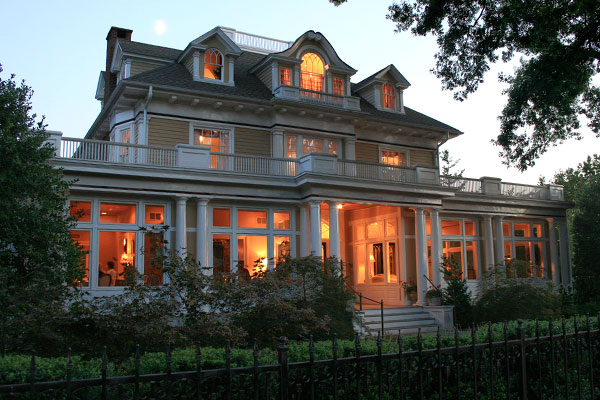 The 1874 Wrightson House, which had been cut up into apartments and poorly maintained, is restored as the Inn at 202 Dover. Originally the house was Italianate style but remodeled as a Colonial Revival on steroids around 1900. We provide design and historic tax credit services. The luxury B&B is now known as the Tidewater House.
The 1874 Wrightson House, which had been cut up into apartments and poorly maintained, is restored as the Inn at 202 Dover. Originally the house was Italianate style but remodeled as a Colonial Revival on steroids around 1900. We provide design and historic tax credit services. The luxury B&B is now known as the Tidewater House.
74,000 Hours
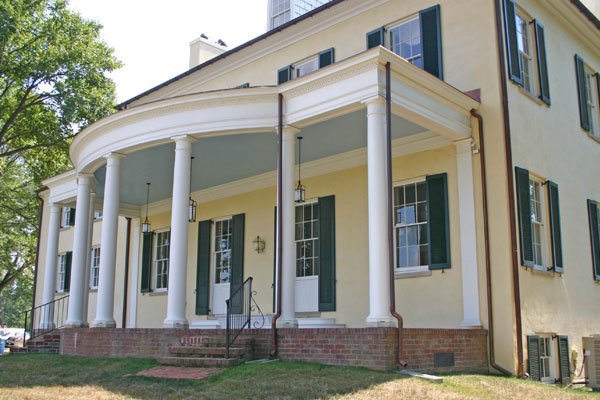 A survey of 950 acres with 56 farm related structures for a Section 106 review leads to work on the 1819 Bowieville Mansion. Built by Mary Bowie, daughter of Maryland’s first governor, the complete restoration includes repairing story high-wood trusses, replacing 20 foot tall columns, and conserving the original woodwork graining. In addition to providing full architecture and engineering services, we help the owner get Federal, State and County Historic Tax Credits.
A survey of 950 acres with 56 farm related structures for a Section 106 review leads to work on the 1819 Bowieville Mansion. Built by Mary Bowie, daughter of Maryland’s first governor, the complete restoration includes repairing story high-wood trusses, replacing 20 foot tall columns, and conserving the original woodwork graining. In addition to providing full architecture and engineering services, we help the owner get Federal, State and County Historic Tax Credits.
82,000 Hours
 All of the firm’s technical and preservation skills are used for the McCormick-Goodhart Mansion Gold LEED and Historic Tax Credit restoration and adaptive reuse project. The Georgian Revival style exterior and Tudor Style interior were in terrible condition due to fire and water damage. Restoration of linen fold oak paneling and foot deep decorative plaster ceilings was paired with an underground addition, geothermal heating, an elevator, and custom reception desk. The project, completed for CASA de Maryland, receives numerous design and preservation awards.
All of the firm’s technical and preservation skills are used for the McCormick-Goodhart Mansion Gold LEED and Historic Tax Credit restoration and adaptive reuse project. The Georgian Revival style exterior and Tudor Style interior were in terrible condition due to fire and water damage. Restoration of linen fold oak paneling and foot deep decorative plaster ceilings was paired with an underground addition, geothermal heating, an elevator, and custom reception desk. The project, completed for CASA de Maryland, receives numerous design and preservation awards.
83,000 Hours
 We restore and open an office in Easton, Maryland to serve our Eastern Shore clients.
We restore and open an office in Easton, Maryland to serve our Eastern Shore clients.
85,000 Hours
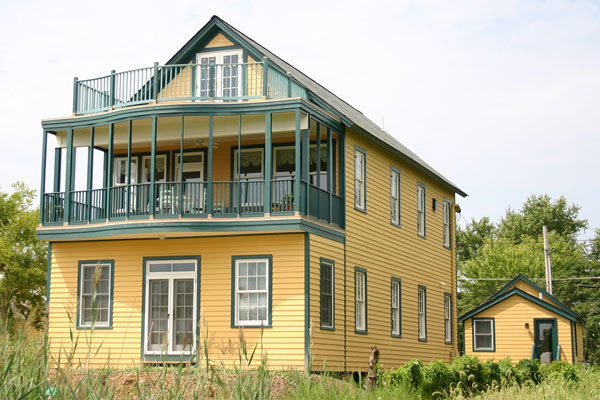 Our family purchases and rehabilitates the Downes Curtis Sail Loft, a former schoolhouse built in 1899 in Oxford, MD. The building was in such bad condition it was bought for the price of the land minus the cost of demolition. The two-story landmark was restored on the exterior, adapted as a single-family house on the interior, and raised three feet. Lifting the house avoided damage from hurricane Isabel when the floor water came within eight inches of the bottom of the first-floor framing.
Our family purchases and rehabilitates the Downes Curtis Sail Loft, a former schoolhouse built in 1899 in Oxford, MD. The building was in such bad condition it was bought for the price of the land minus the cost of demolition. The two-story landmark was restored on the exterior, adapted as a single-family house on the interior, and raised three feet. Lifting the house avoided damage from hurricane Isabel when the floor water came within eight inches of the bottom of the first-floor framing.
86,000 Hours
 I collaborate with the Center for Innovative Technology and Eisterhold Associates on the design of TechWorks!, a museum of invention housed in an old ice cream factory in Binghamton NY.
I collaborate with the Center for Innovative Technology and Eisterhold Associates on the design of TechWorks!, a museum of invention housed in an old ice cream factory in Binghamton NY.
87,000 Hours
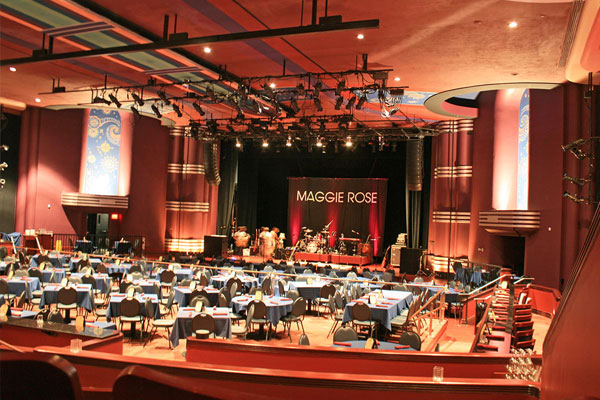 I redesign the interior of the Bethesda Blues & Jazz Club located in the 1938 Art Deco style Bethesda Theatre to accommodate 300 diners plus 200 gallery seats. Special features include a 40-foot long bar and a compact commercial kitchen that can serve all the diners in an hour..
I redesign the interior of the Bethesda Blues & Jazz Club located in the 1938 Art Deco style Bethesda Theatre to accommodate 300 diners plus 200 gallery seats. Special features include a 40-foot long bar and a compact commercial kitchen that can serve all the diners in an hour..
88,000 Hours
I am awarded a Fellowship to study at the International Centre for the Study of the Preservation and Restoration of Cultural Property (ICCROM) in Rome, Italy researching best ways to determine the age of historic structures, and get to spend spring in Rome with my family.
92,000 Hours
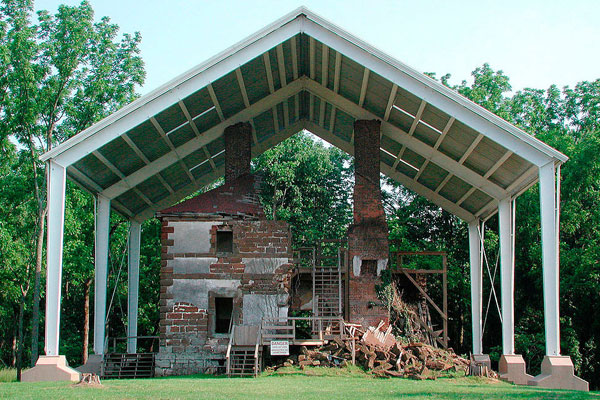 The firm prepares the Historic Structure Report and is the Historical Architect for the Menokin Glass House project. The large design team for the National Historic Landmark is led by Machado Silvetti Associates.
The firm prepares the Historic Structure Report and is the Historical Architect for the Menokin Glass House project. The large design team for the National Historic Landmark is led by Machado Silvetti Associates.
94,000 Hours
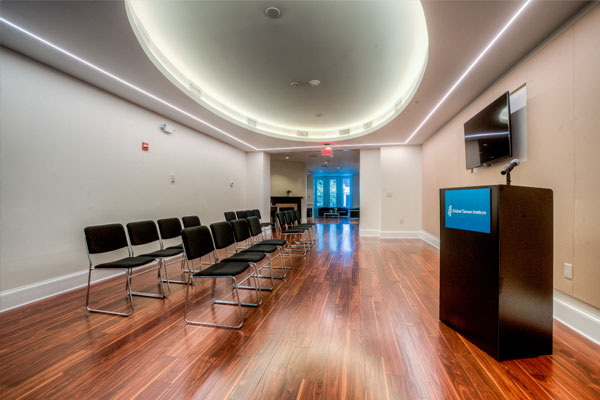 The interior of a large Washington, DC townhouse is redesigned as the headquarters of the Global Taiwan Institute.
The interior of a large Washington, DC townhouse is redesigned as the headquarters of the Global Taiwan Institute.
98,000 Hours
I complete seven years as Chairman of the Talbot County (MD) Historic Preservation Commission.
100,000 Hours
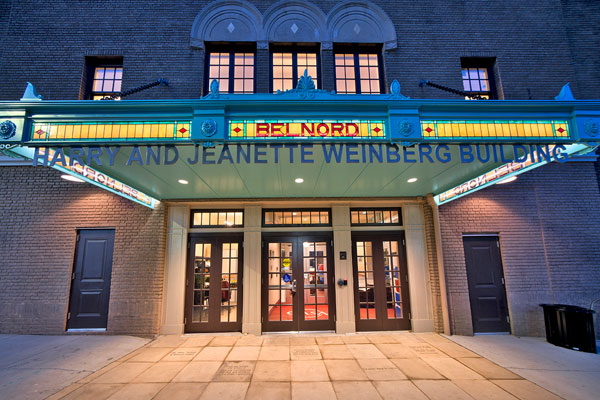 I continue to practice preservation with fun and inspiring projects. The firm assists the team for the adaptive reuse of the 1921 Belnord Theatre by providing Historical Architect, LEED, Historic Tax Credit, Interior Design, and Construction Administration services.
I continue to practice preservation with fun and inspiring projects. The firm assists the team for the adaptive reuse of the 1921 Belnord Theatre by providing Historical Architect, LEED, Historic Tax Credit, Interior Design, and Construction Administration services.
